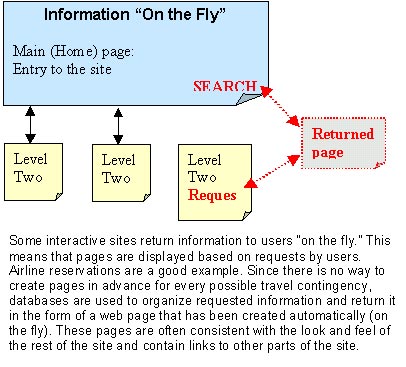Site Structures
The consistency of all aspects of a website is an important usability consideration. Establishing and maintaining consistency requires coordination during the design process. In addition, maintenance procedures must be documented to ensure that consistency is continued as the site is updated. Consistency is a basic usability principle because it reduces the time it takes users to learn your site and it reduces the number of problems they will have using your site.
A variety of structures serve different purposes. The structure you create must be reflective of how users want to use the site—not necessarily the way you (or your client) initially conceives that the site should be organized.
|
Hierarchical structures are the most frequently used type on the web.
|
|
Sequential structures exert more control over paths the users can take through pages.
|
|
An interlinked structure is often used for parts of sites in conjunction with hierarchical structures.
|
|
Becoming more prevalent, particularly in e-commerce, structures that include the pages that are "created on the fly" based on user input are generally linked to databases.
|
Start creating a structure by determining the categories of content that will be included on your site. You may not know all the individual pages you'll have in the long run, but plan for flexibility so that pages can be added within categories. Flexibility is important because websites are frequently updated and expanded over the life of the site.




